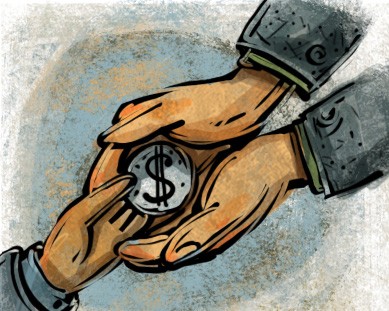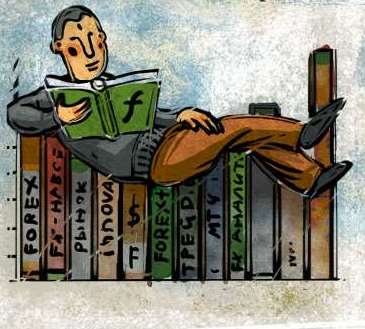The bid-ask bounce effect and the spread size effect: Evidence from the Taiwan stock market
Contents
On the other hand, a wide bid-ask spread is indicative of low liquidity in the open markets and a limited set of buyers/sellers. Han and Lesmond find that stock liquidity, namely bid-ask bounce, affects the pricing of idiosyncratic volatility. Such orders may remove all nearby bids or offers, causing the price to change drastically and instantly.
- The answer requires a closer look into the structure of markets and market making.
- The bid-ask bounce is the bouncing of trade prices between the bid and ask sides of the market.
- Suppose a company’s shares are publicly listed on an exchange and trading at $24.95 per share.
Market makers and professional traders who recognize imminent risk in the markets may also widen the difference between the best bid and the best ask they are willing to offer at a given moment. If all market makers do this on a given security, then the quoted bid-ask spread will reflect a larger than usual size. Some high-frequency traders and market makers attempt to make money by exploiting changes in the bid-ask spread.
Bid-Ask Bounce and the Measurement of Price Behaviour Around Block Trades on the Australian Stock Exchange
Most people have heard of the New York Stock Exchange and Nasdaq, but there are dozens of other venues in total that can “trade” stocks. When transactions occur at the offer, it is called buy volume, and when transactions occur at the bid, it is called how do real estate brokers get paid sell volume. Bid and ask prices drive price movement, because if there is a trade, that trade price disappears, and the price moves to the next available one. Ariana Chávez has over a decade of professional experience in research, editing, and writing.

In short, the bid-ask spread, along with commissions or other fees, represents a basic transaction cost of trading in most financial markets today. Depending on the balance of buy/sell orders in a given stock or on a given day, it’s common for market makers to not make any profit after accounting for all of the costs they incur to manage their risks. Given the competitive and narrow profit per trade margins at which they operate, market makers can lose significant money if they do not update their bids and offers when the market moves.
Bid–ask spread
He has experience analyzing various financial markets, and creating new trading techniques and trading systems for scalping, day, swing, and position trading. The current price on a market exchange is therefore decided by the most recent amount that was paid for an asset by a trader. It’s the consequence of financial traders, investors and brokers interacting with forex strategy for day trading the nfp report one another within a given market. The current price, also known as the market value, is the actual selling price of an asset on an exchange. The current price is constantly fluctuating and is determined by the price at which that asset last traded. Basic economic theory states that the current price is determined where the market forces of supply and demand meet.

For a round trip the liquidity demander pays the spread and the liquidity supplier earns the spread. All limit orders outstanding at a given time (i.e. limit orders that have not been executed) are together called the Limit Order Book. However, on most exchanges, such as the Australian Securities Exchange, there are no designated liquidity suppliers, and liquidity is supplied by other traders. On these exchanges, and even on NASDAQ, institutions and individuals can supply liquidity by placing limit orders. In financial markets, a bid-ask spread is the difference between the asking price and the offering price of a security or other asset.
Login to your account
Charles is a nationally recognized capital markets specialist and educator with over 30 years of experience developing in-depth training programs for burgeoning financial professionals. Charles has taught at a number of institutions including Goldman Sachs, Morgan Stanley, Societe Generale, and many more. It is a convenient graphical presentation of limit orders at each price level. You can now add the Bid/Ask spread as an indicator to see the history of the bid/ask movement in any time frame. The primary determinant of the bid-ask spread is the liquidity of the security and the number of market participants.
Is it possible to make 100 a day day trading?
Can You Day Trade With $100? The short answer is yes. The long answer is that it depends on the strategy you plan to utilize and the broker you want to use. Technically, you can trade with a start capital of only $100 if your broker allows.
Our results indicate that when quote returns are used instead of trade returns, price continuations follow both purchases and sales. We conclude that the asymmetry in price behaviour following block trades is driven by bid-ask bounce. The size of the bid-ask spread from one asset to another differs mainly because of the difference in liquidity of each asset. Certain markets are more liquid than others and that should be reflected in their lower spreads. Essentially, transaction initiators demand liquidity while counterparties supply liquidity.
Price reversals : Bid-ask errors or market overreaction?
Understanding the bid-ask spread when trading stocks is critical in getting the best price, either as a buyer or a seller. That’s especially the case with stocks that aren’t traded that often (i.e., “less liquid” securities), where bid-ask spreads are wider, and thus more impactful on trade executions. Part of what makes market making difficult is the need for speed. You’ve probably heard of “high frequency trading” —the use of computer programs to transact stock orders very quickly to take advantage of short-term market movements.
What is the best time of day to day trade?
The opening 9:30 a.m. to 10:30 a.m. Eastern time (ET) period is often one of the best hours of the day for day trading, offering the biggest moves in the shortest amount of time. A lot of professional day traders stop trading around 11:30 a.m. because that is when volatility and volume tend to taper off.
Investopedia does not include all offers available in the marketplace. As a member, you’ll also get unlimited access to over 84,000 lessons in math, English, science, history, and more. Plus, get practice tests, quizzes, and personalized coaching to help you succeed. Even a novice can easily see the spread in the trading and analytical ATAS platform with the help of the Depth of Market indicator. Sometimes, when analyzing a chart, the spread term means a difference between the high and low of a bar/candle. Look, the number of sales exceeds the number of purchases practically at each price level.
The ask price is the supply price or the lowest price, at which a seller agrees to sell a commodity. Get instant access to video lessons taught by experienced investment cyber security specialist job description template workable bankers. Learn financial statement modeling, DCF, M&A, LBO, Comps and Excel shortcuts. Conversely, the sale is made at the highest bid if a seller places a market order.
- This happens when there are trades on both the bid and asking price, but no real movement in price.
- In this case, the spread increases as it’s harder to sell and buy near the market value due to a lack of volume in trades.
- TC2000 platform & data subscriptions are offered by TC2000 Software Company (“TCS”).
- Some high-frequency traders and market makers attempt to make money by exploiting changes in the bid-ask spread.
The bid-ask spread is the difference between the highest price a buyer will offer and the lowest price a seller will accept . Typically, an asset with a narrow bid-ask spread will have high demand. By contrast, assets with a wide bid-ask spread may have a low volume of demand, therefore influencing wider discrepancies in its price. The bid-ask bounce is a specific situation when the price of a stock or other asset bounces back and forth within the very limited range between the bid price and ask price.
The Speed of the Market
The bid price is the highest possible price that buyers in the market are willing to pay and the ask price is the lowest possible price that sellers are ready to receive. As with many areas of capital markets that are not clear at first glance, trying to “fix” something based on a misunderstanding of how it works…will make it worse. More liquidity in our public markets is a win for everyone, and the complex system that we have today provides more liquidity than at any time in history—especially retail investors. There are many factors that influence people to buy and sell stocks, thus driving prices up or down.
- Demand, but bears the risk of cars aging or going out of trend should they remain unsold.
- By the way, analysis of bids and asks could be very useful when identifying price turnarounds, as you will see further.
- If a transaction is completed, one side must’ve accepted the opposite side’s offer — so either the buyer accepted the asking price or the seller accepted the bid price.
The offer price is the lowest advertised price at which a seller is posting an order. The difference between these two prices is called the “bid-ask spread.” The trading ATAS platform has the Bid Ask indicator, which shows how many trades were traded at the ask price and how many – at the bid price during a certain period of time. Electronic exchanges such as the NYSE or Nasdaq are responsible for matching bid and sale orders in real-time, i.e. facilitating transactions between the two parties, buyers and sellers. Both the bid and ask prices are displayed in real-time and are constantly updating. The changing difference between the two prices is a key indicator of the liquidity of the market and the size of the transaction cost.
Inner price moves are moves of the bid-ask price where the spread has been deducted. The intuition for why this spread measures the cost of immediacy is that, after each trade, the dealer adjusts quotes to reflect the information in the trade . The middle rate, also called mid and mid-market rate, is the exchange rate between a currency’s bid and ask rates in the foreign exchange market. The offers that appear in this table are from partnerships from which Investopedia receives compensation.
Is it better to buy stock at open or close?
The first two and last two hours tend to be the best times to trade the stock market—the beginning and the end of the day. The first and last hours of the day are usually the most volatile as well, so they can be the best for more experienced traders.
The width of the spread might be based not only on liquidity but also on how quickly the prices could change. The difference between these two, the spread, is the principal transaction cost of trading , and it is collected by the market maker through the natural flow of processing orders at the bid and ask prices. This is what financial brokerages mean when they state that their revenues are derived from traders “crossing the spread.” The bid-ask on stocks, also known as the “spread” is the difference between a stock’s bid price and its ask price. Individual stock exchanges like the New York Stock Exchange or NASDAQ work with stock specialists and brokers to set a security’s bid and ask.